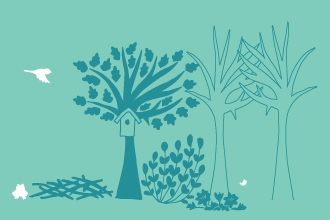The wren's loud bursts of song add to the dynamic of the dawn chorus
Our top 10 wildlife sightings for April
Cowslips (Primula veris) by Guy Edwardes/2020VISION
The dawn chorus
The early morning choir of birds is one of nature’s greatest acoustic treats. From the rhythmic cooing of a woodpigeon through to the melodic tune of a blackbird and the explosive notes of a wren, this symphony of birdsong is worth setting an early alarm for!
The dawn chorus can be enjoyed from the comfort of your home by simply opening a window, but you can hear a greater diversity of song and experience its full glory by visiting a local park or woodland. We run several Dawn Chorus events across our reserves, visit our events page and join one near you – with the added treat of a hot drink and pastry!

Cowslips (Primula veris) by Guy Edwardes/2020VISION
Cowslips
These clusters of egg-yolk-yellow flowers display their vibrant colours in April and May. Their name may derive from cowpat (a ‘cow-slop’) as they were thought to grow in or near these!
While the loss of ancient woodlands and traditional hay meadows has seen a worrying cowslip decline, Chimney Meadows nature reserve is a great place to see swathes of them in spring. Did you know, these flowers smell similar to apricots?
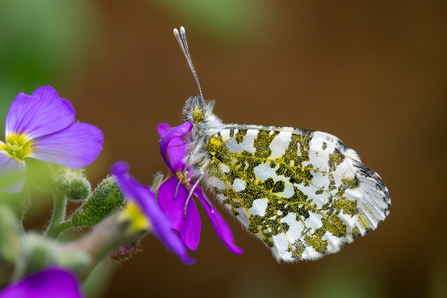
Orange-tip butterfly by Colin Lamb
Orange-tip butterflies
Orange-tip butterflies are a common spring sight. The adult males boast the bright-orange wing tips which earn its name, while the females’ wing tips are black. Both, however, sport distinctive mottled-green underwings which you can see above - a great help for identifying this butterfly.
The adults lay their eggs on special plants to ensure that their caterpillars have the right food to eat. Orange-tip caterpillars love garlic mustard, cuckooflower and hedge mustard plants.
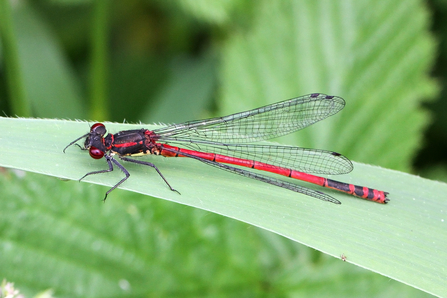
©Margaret Holland
Large red damselflies
These are the earliest damselflies to emerge in the UK and one of our most common species, appearing on the wing from April and flying until late summer.
A regular visitor to gardens, you may see them flying around looking for a pond to breed in. Even if you only have a small outdoor space, you can still create a home for a host of watery wildlife!
A common frog tadpole (bottom) swimming alongside a common toad tadpole (top). Photo by Vaughn Matthews
Tadpoles
Another delightful pond sighting is the frogspawn which began to appear in clumps over the late winter – the similar toadspawn appears as long chains. It takes tadpoles a few weeks to emerge from their eggs, so now is the perfect time to watch them swimming around. Pay a regular visit to their watery world to marvel at them slowly developing into adult frogs and toads. The pond at CS Lewis Nature Reserve is brimming with life at this time of year!
Stickleback egg laying (https://vimeo.com/417948632)
Male stickleback encouraging a female to lay eggs in his nest © Tom Hibbert
Sticklebacks
Further up the food chain, sticklebacks are iconic as the tiny fish that children catch in streams with jars, but they are more fearsome than their reputation suggests! These fish are actually aggressive predators, hunting tadpoles and small fish, and are also known for fiercely protecting their nest of eggs until they hatch.
At this time of year, the male stickleback develops a bright red throat and belly and performs a courtship dance to attract a mate. He builds a sheltered nest out of vegetation, under which the female will lay up to 400 eggs. The male then defends the nest from other fish until the young hatch up to four weeks later.
Look for them in small rivers and streams, such as at our Letcombe Valley reserve and at Moor Copse.
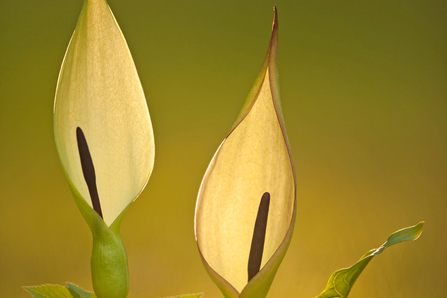
Cuckoo pint by Guy Edwardes/2020VISION
Lords-and-ladies
Look for the unusual flowers of lords-and-ladies in spring woodlands: a pale green sheath surrounds a spike of tiny, yellow flowers. This spike eventually forms a familiar, short stalk of striking red berries. Lords-and-ladies has many other common names, arising from its rather strange look, but 'Cuckoo-pint' is perhaps one of the most widely used.
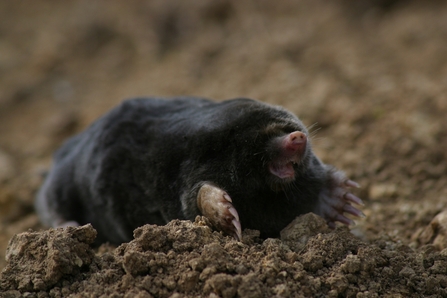
©Steve Bottom
Moles
Moles are remarkable in being one of Britain's most common (and best-loved) animals but also one of the least seen. April offers one of the best chances to spot a mole when they ramp up their tunnel-digging activity as breeding season approaches. Very occasionally individuals will emerge from the ground, but the closest most of us will ever get to seeing one is the sight of a molehill shaking as the architect beneath extends its burrow.
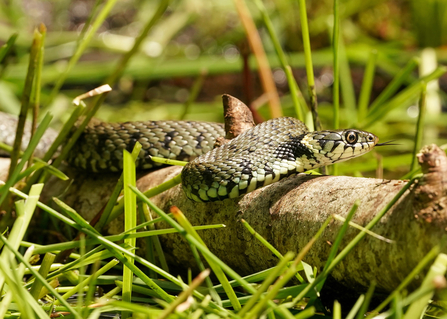
6. Grass snake by John Kearns
Grass snakes
Growing up to a metre-and-a-half long, the beautiful grass snake is our largest reptile but also completely harmless. They begin to emerge in April and quickly start hunting. One of the most breathtaking natural spectacles in this country is the sight of a grass snake gliding over the surface of a pond as it hunts for amphibians - something we are lucky to have on the ponds at our Greenham Common reserve near Newbury.
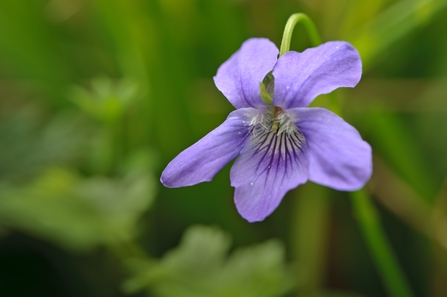
Chris Gomersall/2020VISION
Common dog-violet
If you see a violet in the wild, it is most likely to be the common dog-violet. This widespread purple plant lives happily in many different habitats, including woodland, grassland, heathland, hedgerows and old pasture. It’s very important for several fritillary butterflies – including silver-washed fritillaries which will begin to grace the air from June – because they lay their eggs on it.
You can find them adorning the woodland floor at Foxholes in west Oxfordshire and Yoesden near High Wycombe.




